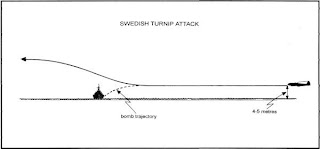SUBSCRIBE TO OUR RSSfeeds: http://feeds.feedburner.com/WorldWar2Eagles
Martin Harlinghausen was born on 17 January 1902 in Rheda, Westfalia. He completed his youth studies receiving the Abitur (diploma) in 1922, and then studied one semester at the faculty of law in Gottingen.
Harlinghausen joined the Reichsmarine on 1 April 1923 and qualified as Leutnant zur See in 1927. In 1933 he joined the new Luftwaffe. Due to his experience in naval warfare he was given command of AS 88 - Aufklarungsgruppe 88 - the maritime reconaissance unit of the Condor Legion.
When WW2 broke out in 1939, the Luftwaffe was mainly a tactical force, focused on operations on land. The anti-shipping units consisted of seven Kustenfliegergruppen, equipped with float and seaplanes such as the Heinkel He 59, He 60, He 115 and Do 18, with limited offensive potential. It seemed that the war in the Atlantic was to be carried out by the Uboatwaffe exclusively. However, the fall of France in 1940 gave the Luftwaffe the opportunity to use airfields in Bretagne and the Bay of Biscay, with a direct access to the Atlantic Ocean and the Western Approaches. This led to the creation of the X. Fliegerkorps, whose taks was to attack the merchant traffic around the British Isles, and to act as spotters for the U-boats.
Harlinghausen was appointed Chieff of Staff of X. Fliegerkorps, carrying out both operational and administrative duties. During his offensive missions, he managed to sink over 100,000 GRT of Allied shipping. On 3 March 1941, he was appointed Fliegerfuhrer Atlantik, organizing a co-ordinating all maritime operations in the Atlantic Ocean.
Martin Harlinghausen was the man responsible for inventing and implementing the Fw 200 favoured method of attack, the so called "Swedish Turnip": essentially a form of skip bombing, this method involved flying at low level, normally 45 m, at speeds around 320 km/h (200 mph). Bombs were dropped at around 240 m from the target, and set with an 8-second delay, so to allow the aircraft to fly past and the bomb to sink in the water and explode near the hull of the targeted vessel.
Harlinghausen was appointed Fliegerfuhrer Tunisien in July 1942 and remained in the Mediterranen until July 1943, when he was replaced. He was then appointed Chef des Luftkommandos West, a position in which he remained until the end of the war.
Postwar, he served in the Bundesluftwaffe from 1957 to 1961, when he was sent into retirement for political reasons, after the 1961 F-84 Thunderstreak incident. Martin Harlinghausen died in March 1986 in Gutersloh. He was a recipient of the Knight's Cross with Oak Leaves, and had been mentioned on the Wermachbericht on 3 November 1940:
A combat aircraft sank a merchant ship of 6000 GRT on the British East Coast. The commander of this aircraft, Major in the general staff Harlinghausen, thus destroyed his 20th merchant ship with a total tonnage exceeding 100 000 GRT



No comments:
Post a Comment